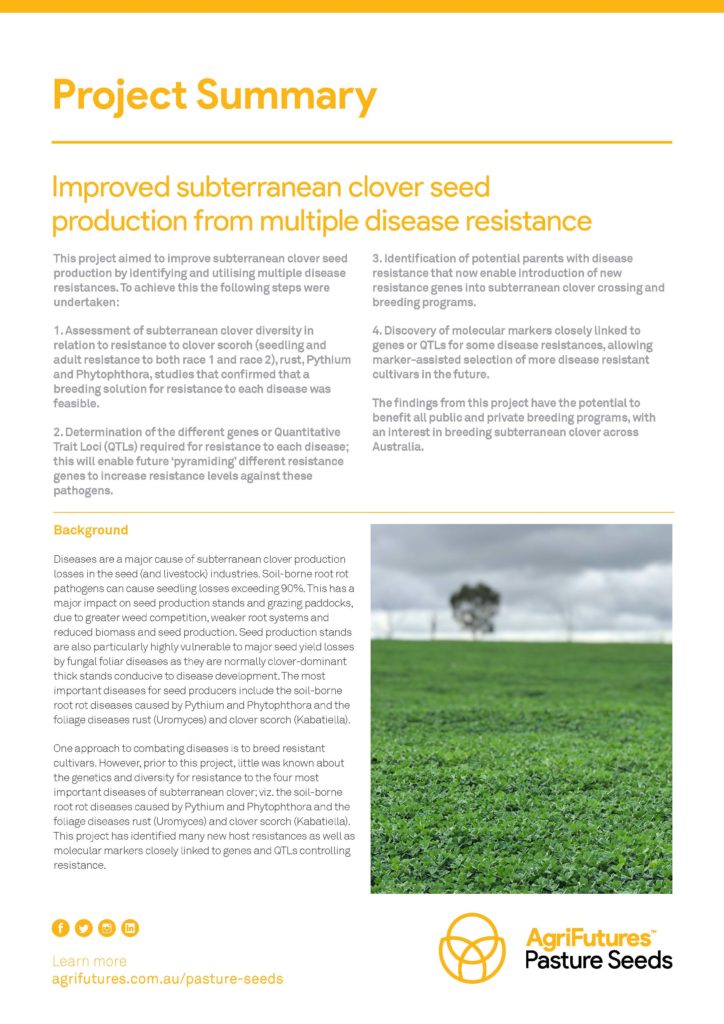Diseases are a major cause of subterranean clover production losses in the seed (and livestock) industries. Soil-borne root rot pathogens can cause seedling losses exceeding 90%. This has a major impact on seed production stands and grazing paddocks, due to greater weed competition, weaker root systems and reduced biomass and seed production. Seed production stands are also particularly highly vulnerable to major seed yield losses by fungal foliar diseases as they are normally clover-dominant thick stands conducive to disease development. The most important diseases for seed producers include the soil-borne root rot diseases caused by Pythium and Phytophthora and the foliage diseases rust (Uromyces) and clover scorch (Kabatiella).
One approach to combating diseases is to breed resistant cultivars. However, prior to this project, little was known about the genetics and diversity for resistance to the four most important diseases of subterranean clover; viz. the soil-borne root rot diseases caused by Pythium and Phytophthora and the foliage diseases rust (Uromyces) and clover scorch (Kabatiella). This project has identified many new host resistances as well as molecular markers closely linked to genes and QTLs controlling resistance.





